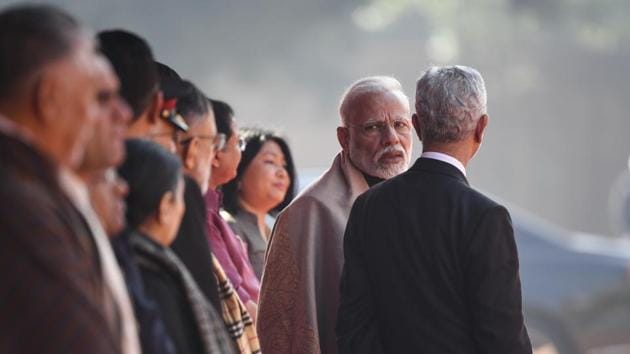No buffer zone on LAC, only suspended patrolling to avoid flareup on border
Officials said the disengagement had been completed at Galwan with neither of the forces sitting on or next to the LAC.
Soldiers of China’s People’s Liberation Army and Indian Army have moved back at least 600 metres from the four friction points in east Ladakh where they were in an eyeball-to-eyeball confrontation, people familiar with the developments told Hindustan Times after an on-ground verification by the army.

The PLA soldiers, who had maintained an aggressive posture, have also taken a step back at other locations along the 1,597 km Line of Actual Control in the western sector.
Initial reports had indicated that the PLA troops had moved 1.5 km from the stand-off point.
Military officials said this implied that there was no buffer zone.
“All we have done is that both sides have withdrawn to rear positions so that no accident or flare-up takes place,” a senior military commander said.
It was in this context that external affairs minister Subrahmanyam Jaishankar on Saturday described the “disengagement and de-escalation” process with China as “work in progress”. Jaishankar said the process had been mutually agreed upon and just commenced.
“What’s happened is that we have agreed on the need to disengage because the troops on both sides are deployed very close to each other,” the external affairs minister told an event organised by India Inc, a UK-based media house. India and China on Friday said they would push forward efforts aimed at complete disengagement and easing of tensions along the LAC even as differences remained over issues such as Beijing’s insistence of claiming ownership of Galwan valley.
Officials said the disengagement had been completed at Galwan with neither of the forces sitting on or next to the LAC. The situation at Patrolling Point 15 (Gogra) and Patrolling Point 17 (Hot Springs) is that troops on both sides have disengaged although they are still some distance away from their positions on April 20, the day when the PLA’s troop buildup started. The first violent clash between Indian and Chinese patrols on the northern bank of Ladakh’s Pangong lake took place a fortnight later. Scores of soldiers (from both sides) were injured in the skirmish involving 250 men.
At Pangong Tso, the Chinese PLA has withdrawn from Finger 4 relief but some troops on both sides are still sitting on the ridge-line above it. Troops are also in close proximity at the Depsang Plains area but the broad indications are that both sides want to end the impasse.
Military and diplomatic officials said the two sides had decided to halt patrolling at the four stand-off points - Galwan, Gogra, Hot Springs and Pangong Tso - without prejudice to their patrolling rights as a precaution. This will help reduce temperatures on the border and avoid any chance of an accident.
India and China had agreed to a similar suspension of patrolling after similar stand-offs at Finger 8 in Pangong Tso in 2008 and at Depsang Bulge in 2013 were resolved.
The senior military commander cited above said the Chinese People’s Liberation Army (PLA) is dismantling structures and moving vehicles back at the stand-off points in daylight to maintain transparency. It also wants Indian troops to move back the same distance as there is a trust deficit between the two sides. “It only requires a spark to catch fire and undo all the dialogue,” said a senior military commander.
Military commanders of the two countries are expected to hold the fourth round of dialogue next week to build on the icebreaker conversation between National Security Advisor Ajit Doval and Chinese foreign minister Wang Yi. On Friday, the joint secretary-level Working Mechanism for Consultation and Coordination (WMCC) on border affairs held their meeting.
Get Current Updates on India News, Lok Sabha Election 2024 Live, Election 2024 along with Latest News and Top Headlines from India and around the world.




